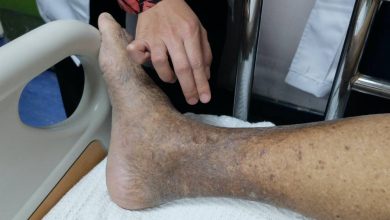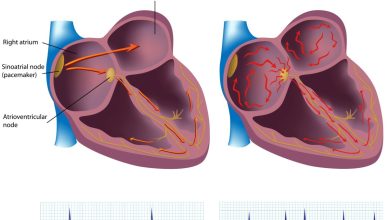Edema Symptoms, Causes, Diagnosis and Treatment

What is edema?
Edema is basically swelling, which is caused due to the accumulation of excess fluid in the body’s tissues. Edema is mostly noticed in the arms, legs, ankles, feet and hands. The condition can be triggered due to pregnancy, medication result, liver cirrhosis or kidney disease. Moreover, taking prescribed medication can remove the excess fluid, whilst reducing salt in your diet usually relieves the condition.
What are the symptoms of edema?
Symptoms of edema are:
- Puffiness or swelling of your tissue that is directly under the skin.
- Shiny or stretched skin.
- A dimple retaining skin if pressed for few seconds.
- Increased size of abdominal.
When is the high time to consult a doctor?
Besides noticing swelling, shiny or stretched skin, you experience chest pain and breathing difficulties, immediately consult your doctor.
What are the causes of edema?
Edema tends to occur when capillaries (small blood vessels) leak fluid, this fluid accumulates in the surrounding tissues, consequently, cause swelling. Minor cases of the condition may result due to:
- Staying or sitting in a position for a prolong period of time.
- Consuming excessive salt in food.
- Pregnancy.
- Premenstrual symptoms.
- Side effect of certain medications.
In few cases, the condition may be the signal of a severe causal medical condition. Conditions and disease that can cause the condition are:
- Cirrhosis.
- Congestive heart failure.
- Kidney disease.
- Kidney damage.
- Damage or weak leg veins.
- Inadequate lymphatic system.
What are the risk factors for edema?
As the fluid required by the placenta and fetus, the body of a pregnant woman retain more water and sodium than usual, thus increasing the risk to develop edema. Certain medications can also increase the risk, they include:
- Calcium channel blockers.
- Estrogens.
- Medications for diabetes called thiazolidinediones and
- NSAIDs.
What are the complications of edema?
In case edema is not treated, it can cause:
- Stiffness.
- Stretched skin that can become uncomfortable and itchy.
- Difficulty walking.
- Increased risk to develop infection (swollen area).
- Increasingly painful puffiness or swelling.
- Scarring between tissue layers.
- Increased risk to develop skin ulcers.
- Decreased veins, muscles, arteries and joints elasticity.
- Reduced blood circulation and
- Increased risk to develop skin ulcers.
How is edema diagnosed?
In order to determine the underlying cause of the condition, the doctor will conduct a thorough physical exam whilst discussing regarding your symptoms and medical history. Your doctor will use the information to find out the basic cause of edema in your case. In few cases, ultrasound exams, urine analysis, blood tests and X-rays may be required.
How is edema treated?
The condition goes away itself usually; however severe edema can be treated through drugs which help the body discharge excess fluid in urine form. For example, furosemide(lasix) is among the common diuretics. Furthermore, long-term management normally focuses to treat the basic cause of swelling.
By : Natural Health News




